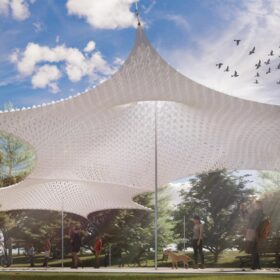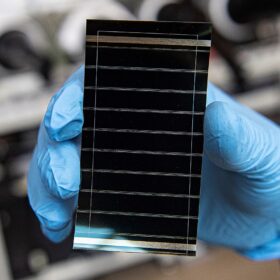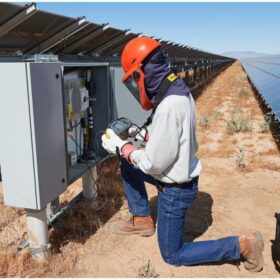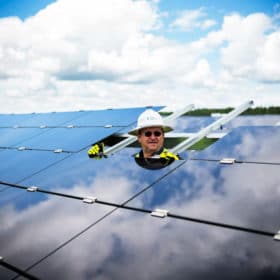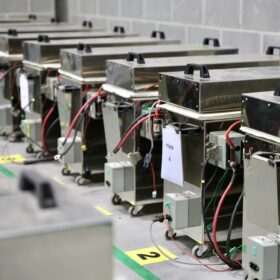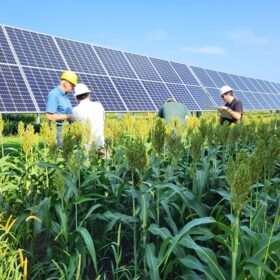Cornell researchers bring art and science to flexible solar ‘skin’
In a pilot project the researchers plan to create a portable, dual-axis canopy of approximately 150 square feet that will morph and track the sun to optimize solar energy capture.
Perovskite tandem provider integrates with existing solar manufacturing lines
While many perovskite developers pursue a 2-terminal format, which poses design and production constraints, Caelux uses a 4-terminal approach that bypasses technical challenges.
Space-to-earth solar transmission startup Aetherflux raises $50 million
The California-based company plans to transmit energy from satellites to ground stations.
Clean electricity could surpass 50% of generation this April
Solar growth bolsters other clean energy sources after 90 GW of new solar capacity was deployed over the last two years. Big solar generation grew by more than 58% in January versus last year, with all types of photovoltaics delivering just over 5% of the nation’s electricity.
Solar generation systems may open grids to cyberattacks
Report says vulnerabilities in even residential systems could enable widespread grid instability.
Amid skill shortages, companies continue to outsource solar maintenance
About half of more than 400 surveyed original equipment manufacturers, technicians and installers said they are using external partners for their solar maintenance.
Utility profits grow along with anti-rooftop solar action
The Center for Biodiversity evaluated six investor-owned utilities for recent activities, earnings and demonstrated attitude toward distributed clean energy.
Solar-plus-storage for extreme low temperatures
Scientists in the United States have created a testing platform for energy harvesting in solar-plus-storage systems under extreme temperatures ranging from -180 C to 300 C.
Inlyte Energy moves toward U.S. manufacturing of iron-sodium batteries
The startup’s collaboration with the Swiss company, Horien Salt Battery Solutions, is set to accelerate the commercialization of its low-cost, long-duration energy storage technology.
California solar on canals initiative moves forward
The California Solar Canal Initiative project aims to use information gained in a University of California, Merced study and begin to identify communities willing to generate electricity with solar arrays over their canals.
